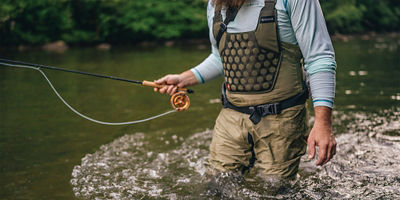
Lures don’t just attract fish. They’re also a fun gear item for you to find, sifting through colors like a connoisseur, choosing the right one for the fish you’re eyeing. Different sizes, shapes, and designs make each lure unique. But all the distinctions that can turn your tackle box into a meticulously crafted library of lures can make the process of collecting them a serious headache. Lures are about as diverse as the fish and water you’ll drop them in, so understanding their various major categories and features will help you craft a tackle box with the perfect tools for your target fish—so you can switch your brainpower to picking the right drink to pair with your next catch.
Ask Yourself These Questions
Whether you’re standing in the store fishing aisle looking at a wall of lures, or on your favorite lakeshore deciding what to toss, start with a few questions:
First thing’s first: Bait or lure?
Using live bait is one of the oldest ways to fish, and it still works for a lot of different fishing styles. For starters, it depends largely on the fish you’re trying to catch. If you’re fishing at night or in muddy or dark water, bait might be the better option. Live bait is often cheap, but you need to buy it fresh more often. Lures are more ideal for aggressive or predatory fish, as well as for catch and release. Lures can also weed out some of the smaller or less-desirable fish.
What are you trying to catch?
Different fish species have different tastes, so identifying what you’re hoping to catch on any particular day is the obvious first step toward picking the right lure. Do some research on the fish: How big is it? What is its main food source? Does it have teeth? Is it predatory, territorial, or a bottom feeder? Learn as much as you can about your target and keep it in the back of your mind while you’re going through the rest of the process.




















